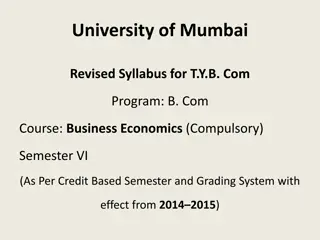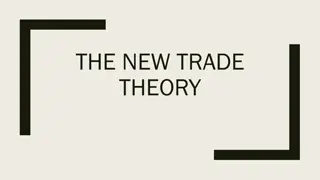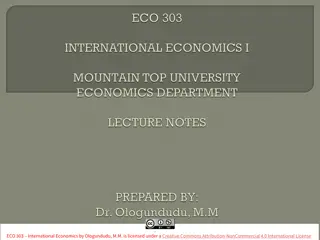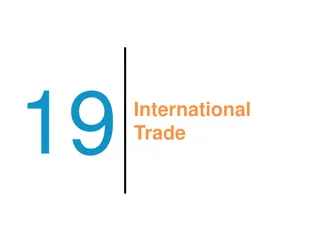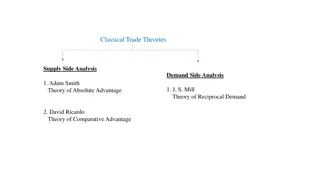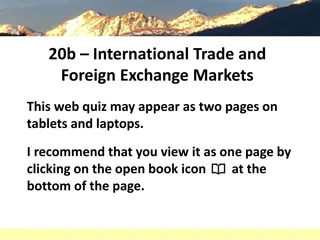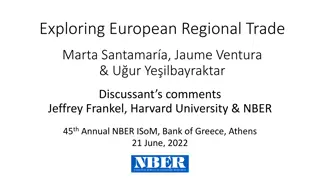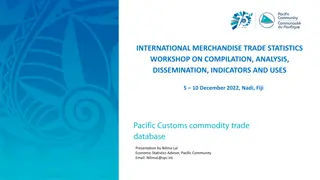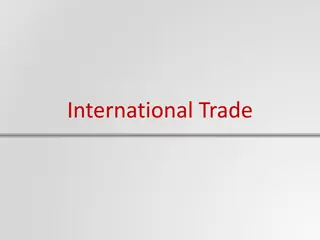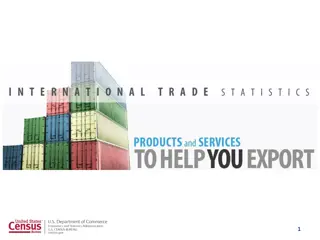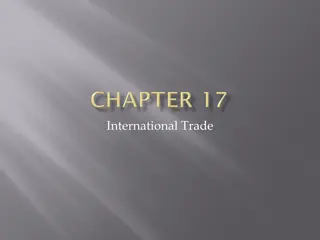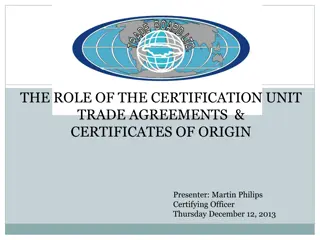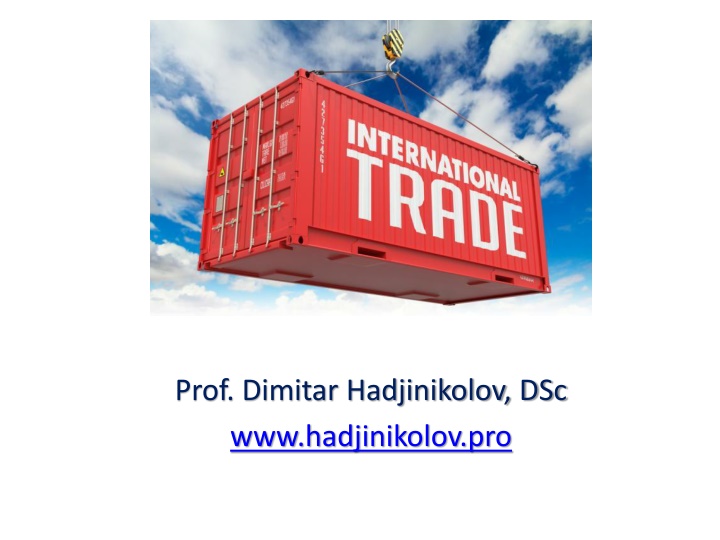
International Trade Theories and State Intervention
Interventionist theories in international trade examine concepts such as mercantilism, neomercantilism, and economic liberalism. The role of state intervention in the economy, highlighted through strategies like dirigisme and functionalism, is explored. The evolution from national regulations to global market frameworks is discussed, along with the underlying principles of mercantilism and the influence of notable figures like Jean-Baptiste Colbert.
Download Presentation

Please find below an Image/Link to download the presentation.
The content on the website is provided AS IS for your information and personal use only. It may not be sold, licensed, or shared on other websites without obtaining consent from the author. If you encounter any issues during the download, it is possible that the publisher has removed the file from their server.
You are allowed to download the files provided on this website for personal or commercial use, subject to the condition that they are used lawfully. All files are the property of their respective owners.
The content on the website is provided AS IS for your information and personal use only. It may not be sold, licensed, or shared on other websites without obtaining consent from the author.
E N D
Presentation Transcript
Prof. Dimitar Hadjinikolov, DSc www.hadjinikolov.pro
Interventionist Theories 1. 2. 3. International trade in the global political economy overview Mercantilism 3. Neomercantilism International trade and balance of payment statistics Image result for mercantilism vs economic liberalism pics Under p. 1 Mercantilism vs liberalism? Q: Who is the winner? A: Nobody yet. 2
The role of the State in the Economy: Intervention Strategy Matrix 3
Interventionism in contemporary economic policy: - Dirigisme, an approach to economic development emphasizing the positive role of state intervention. The term dirigisme is derived from the French word diriger ( to direct ), which signifies the control of economic activity by the state. Preventing market failure was the basic rationale of this approach. Dirigisme was introduced in France following World War II to promote industrialization and protect against foreign competition, and it was subsequently mimicked in East Asia. Dirigiste policies often include centralized economic planning, directing investment, controlling wages and prices, and supervising labour markets. Q: Are there some positive examples of dirigisme? What about China? - Functionalism, Socialism, Sustainable development, etc.) 4
Economic liberalism More about liberal international trade theories in the next lectures! We are leaving in a time of a transition from markets with national regulations to a global market with supranational regulations 5
2. Mercantilism The underlying principles of mercantilism included (1) the belief that the amount of wealth in the world was relatively static; (2) the belief that a country's wealth could best be judged by the amount of precious metals or bullion it possessed; (3) the need to encourage exports over imports as a means for obtaining a favorable balance of foreign trade that would yield such metals; (4) the value of a large population as a key to self-sufficiency and state power; (5) the belief that the crown or state should exercise a dominant role in assisting and directing the national and international economies to these ends. Jean-Baptiste Colbert (1619 1683) https://upload.wikimedia.org/wikipedia/commons/thumb/7/70/Jean-Baptiste_Colbert.jpg/200px-Jean-Baptiste_Colbert.jpg French finance minister and mercantilist Jean-Baptiste Colbert served for over 20 years 6
Image result As such, mercantilism developed logically from the changes inherent in the decline of feudalism, the rise of strong national states, and the development of the international trade. High tariffs, especially on manufactured goods, are an almost universal feature of mercantilist policy. Other policies have included forbidding colonies to trade with other nations; monopolizing markets with staple ports; banning the export of gold and silver, forbidding trade to be carried in foreign ships, subsidies on exports; promoting manufacturing through research or direct subsidies; limiting wages; maximizing the use of domestic resources; restricting imports through non-tariff barriers to trade. Image result for mercantilism vs economic liberalism pics Q: Can you give examples for similar practices in our time? British free-trade imperialism, 7
John Maynard Keynes argued that encouraging production was just as important as consumption, and he favoured the "new mercantilism". Image result for Keynes pics encouraging Keynes also noted that in the early modern period the focus on the bullion supplies was reasonable. In an era before paper money, an increase in bullion was one of the few ways to increase the money stimulate economic growth! Keynes policies domestic and foreign investment domestic because the policies lowered the domestic rate of interest, and investment by foreigners by tending to create a favorable balance of trade. said also generally that mercantilist improved supply and both Keynes and other economists of the 20th century also realized that the balance of payments is an important concern. 9
The similarities between Keynesianism (and its successor ideas) and mercantilism have sometimes led critics to call them neo-mercantilism. Indeed, the great economist Paul Samuelson, writing within a Keynesian framework, defended mercantilism, writing, "With employment less than full and Net National Product suboptimal, all the debunked mercantilist arguments turn out to be valid." Image result for samuelson pics Q: What do you know about the so called Casino economy 10
4. International trade and balance of payment statistics Q: Does this remind us of mercantilism? 11
The more exports - more accumulated wealth Q: Does this remind us of mercantilism? 12
If we look at the global economy - the result is also aligned and the difference is always zero. Q: Does this remind us of mercantilism? 13
In January 2018, Trump imposed tariffs on solar panels and washing machines of 30 to 50 percent. Later the same year he imposed tariffs on steel (25%) and aluminum (10%) from most countries. Separately, on July 6, the Trump administration set a tariff of 25% on 800 categories of goods imported from China worth $50 billion. On 17.9.2018 Trump has intensified his trade war with China by imposing new tariffs of $200bn. IS THIS MERKANTILISM? 14




